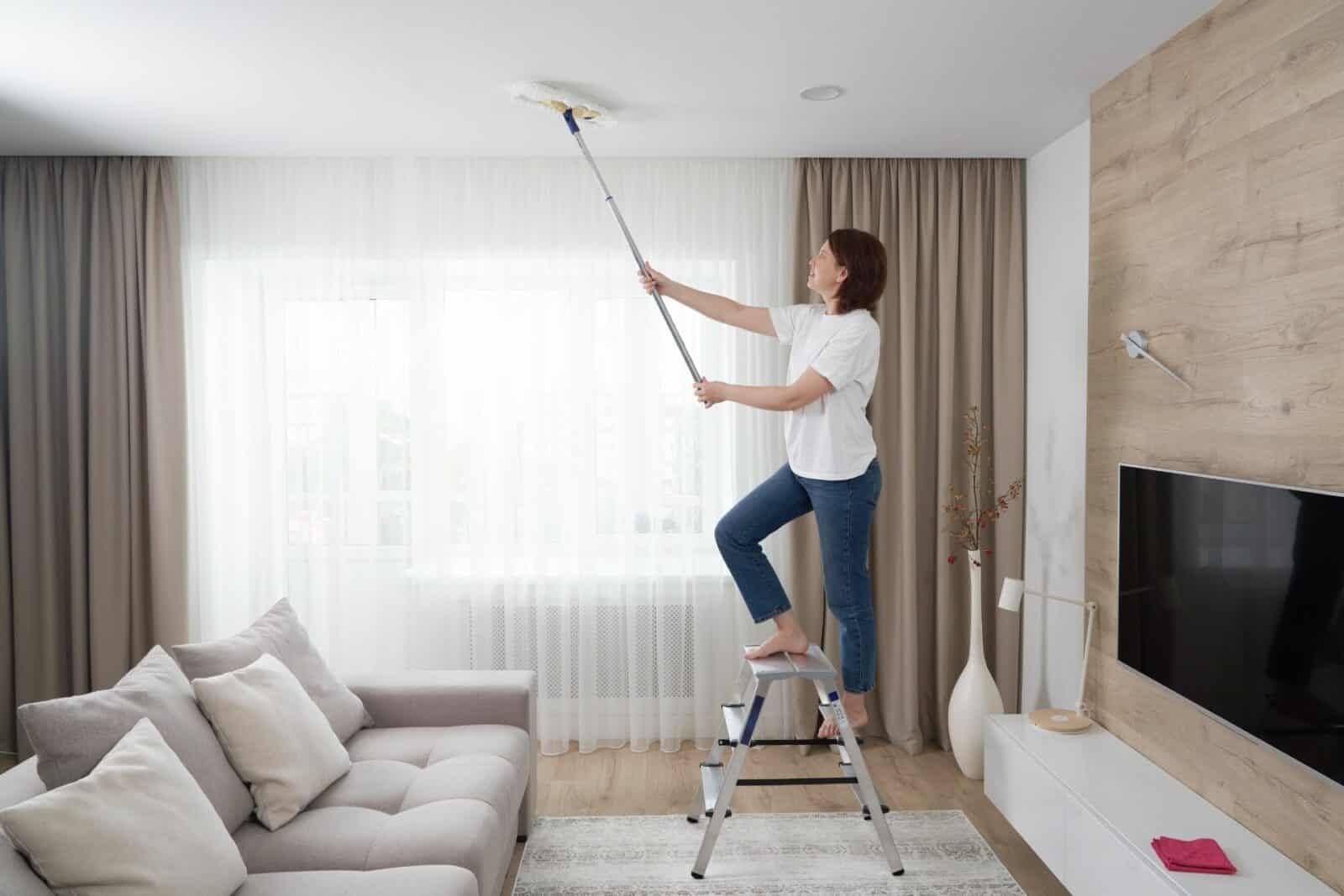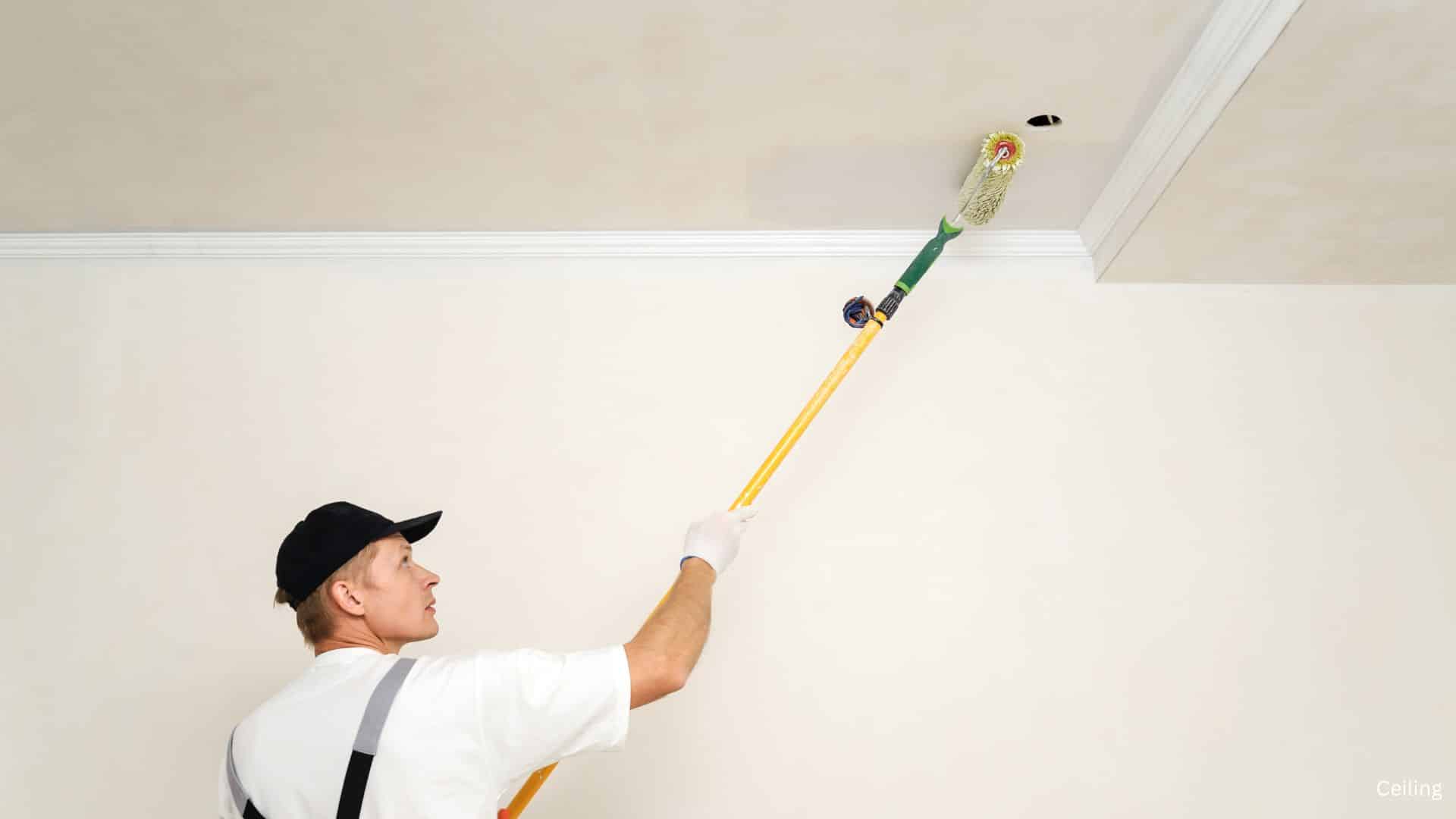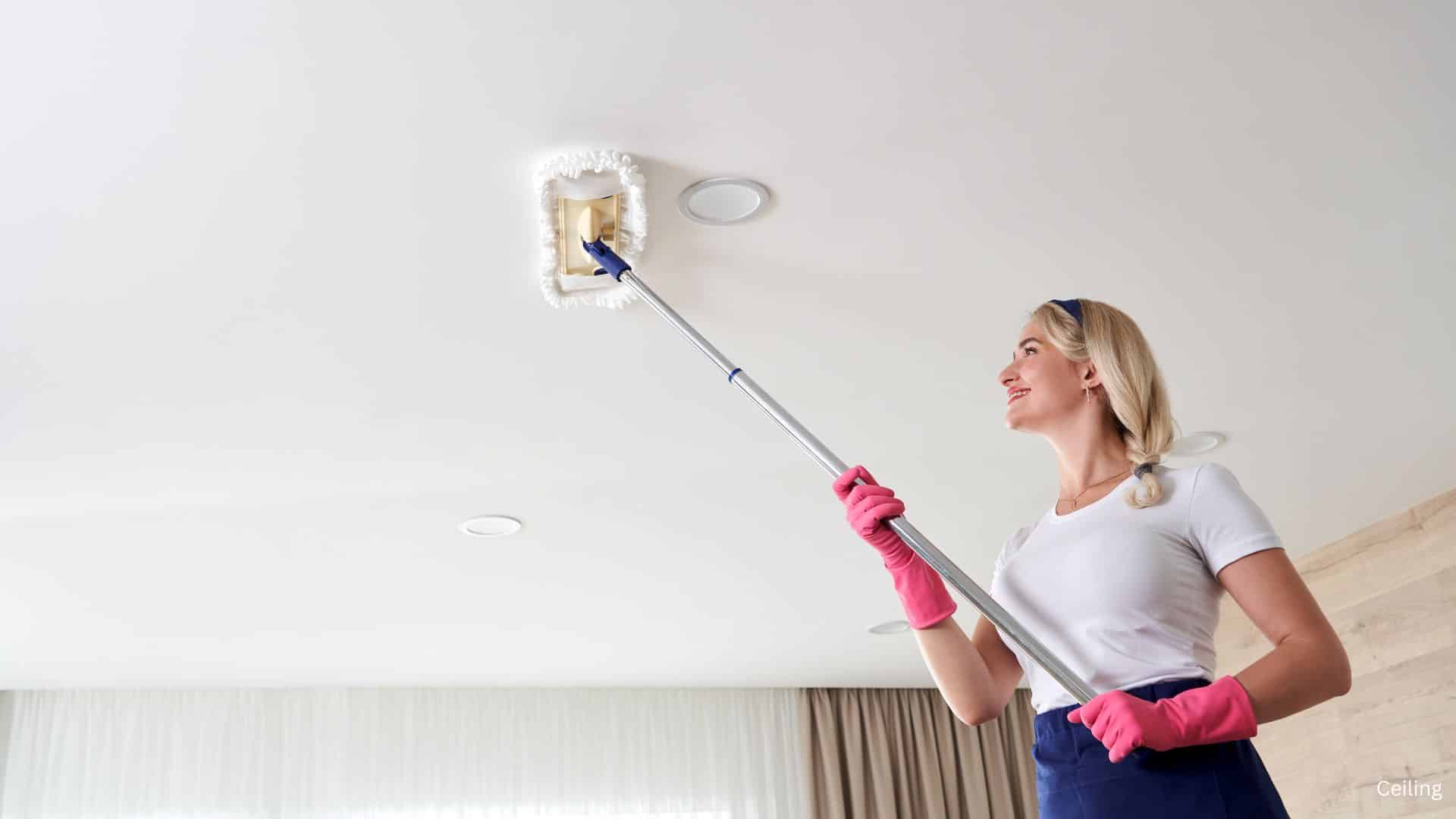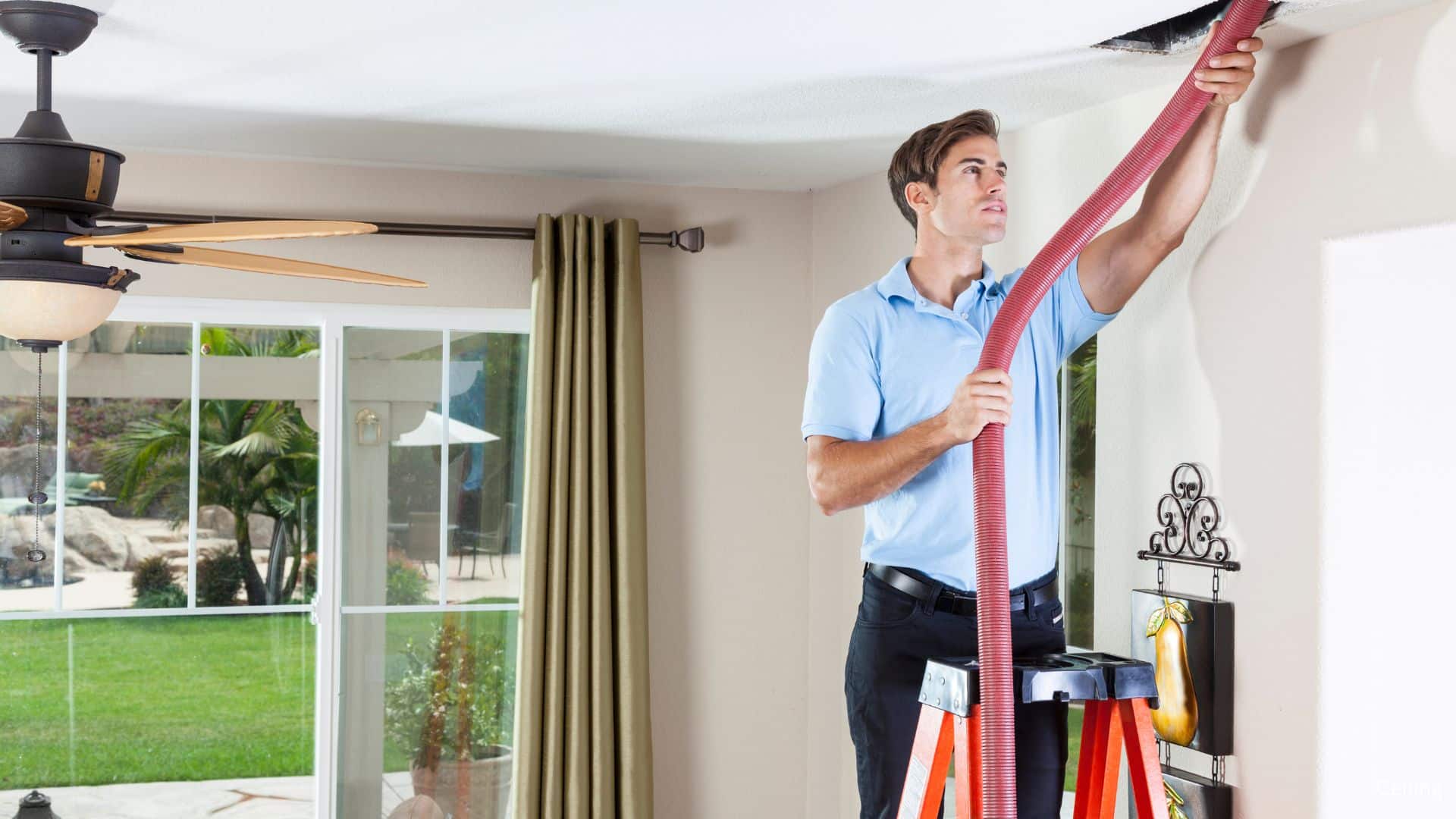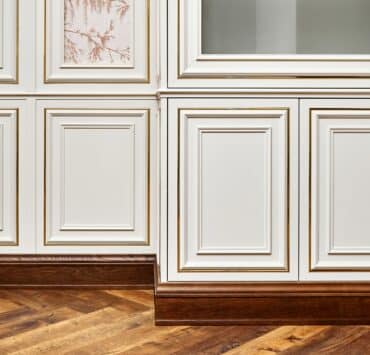Ceilings, often the neglected surface in many households, hold an uncanny ability to accumulate dust, grime, and cobwebs over time. A clean ceiling can have a profound impact on the overall freshness and aesthetics of your home. Welcome to the ultimate guide to ceiling cleaning, where we unlock the mysteries of maintaining a pristine ceiling.
Gathering Necessary Supplies
When it comes to ceiling cleaning, preparation is key. Gathering the right supplies beforehand can save time and ensure a smoother cleaning process. Here, we break down the essential tools and products that will come in handy.
Essential Tools
To tackle the dust and grime accumulating on your ceilings, you’ll need a selection of tools that are both efficient and gentle on the surfaces. Here is a list of essential tools that should be a part of your ceiling cleaning arsenal:
- Telescopic duster: To reach the high corners and edges without straining yourself.
- Soft-bristled brush: For gentle cleaning, especially for textured ceilings.
- Microfiber cloth: To wipe down the surface and remove residue.
- Step ladder: To safely reach higher spots on the ceiling.
- Protective goggles and masks: To shield yourself from falling debris and dust.
Choosing Environmentally Friendly Cleaning Products
As we move towards a greener future, selecting eco-friendly cleaning products is a responsible choice. These products are not only kinder to the environment but also tend to be gentler on the surfaces they are used on. Here are a few tips on choosing the right cleaning products:
- Opt for products that are labeled as biodegradable or non-toxic.
- Consider making homemade cleaning solutions using natural ingredients like vinegar and baking soda.
- Look for products that are packaged in recyclable containers to reduce waste.
Types of Ceiling Stains and How to Identify Them
Understanding the kind of stains that can mar your ceiling is essential. In this section, we will explore the various types of stains commonly found on ceilings and tips on how to identify them effectively.
Common Stains
Ceilings often harbor a variety of stains that are a result of moisture, leaks, smoke, and more. Here are some common types of ceiling stains you might encounter:
- Water Stains: Often brownish in color, appearing due to leaks from the roof or upper-floor plumbing issues.
- Smoke Stains: These are a result of cooking fumes, candle soot, or cigarette smoke, presenting as grey or black marks.
- Mold and Mildew Stains: These are characterized by dark spots or patches, generally occurring due to high humidity or lack of ventilation.
Identifying Mold and Mildew
Mold and mildew are not only unsightly but can also pose health risks. Being able to identify them early on is crucial. Here, we will guide you on distinguishing these persistent issues:
- Smell: Often, a musty odor is a giveaway of mold presence.
- Visual Inspection: Mold appears as black, green, or brown spots, often in damp corners.
- Health Symptoms: Persistent respiratory issues or allergies can be an indicator of mold and mildew presence in your home.
Tips: Always consult a professional if you suspect a severe mold issue in your home.
Pre-Cleaning Steps
Before diving into the cleaning process, a few preparatory steps can set the stage for a successful ceiling cleaning project. This section elucidates those steps.
Dusting and Cobweb Removal
Before you start with wet cleaning, it is advisable to remove dust and cobwebs that have accumulated over time. Here’s how you can go about it:
- Using a Long-Handled Duster: This tool will help you reach the far corners and edges of the ceiling without stretching too much.
- Vacuum with a Brush Attachment: This can help in removing loose dust particles effectively.
- Cobweb Duster: Special dusters are available to remove cobwebs without leaving residues.
Protecting Your Furniture and Flooring
To avoid post-cleaning hassles, protecting your furniture and flooring is a smart move. Here’s what you need to do:
- Move Furniture Away: Shift the furniture to the center of the room or cover it with plastic sheets.
- Cover the Floor: Use drop cloths or old sheets to cover the floor and prevent any cleaning solution spills from causing stains.
Pro Tip: Remember to cover electrical fixtures and outlets to prevent accidents.
Ceiling Cleaning for High Humidity Environments
In regions like the Philippines, where humidity levels are consistently high, ceilings are more prone to moisture-related issues such as mold, mildew, and even water stains. Adding an extra layer of protection and vigilance is essential to maintain a clean and safe ceiling environment.
Ceiling Issues in High Humidity Zones
Homes located in tropical regions often face ceiling stains caused by excess moisture, condensation, and poor ventilation. For instance, the rainy season can lead to roof leaks that cause unsightly water stains on ceilings, which, if left untreated, may escalate into mold growth. Here’s how to deal with these specific challenges:
- Water Stains and Leaks: After a heavy rainstorm, it’s common to spot brownish water stains on your ceiling. These are indicative of roof leaks. Once the source of the leak is repaired, clean the stain by using a mixture of bleach and water to prevent mold formation.
- Mold and Mildew Prevention: High humidity levels can easily foster mold and mildew, particularly in areas like bathrooms or kitchens with poor ventilation. Regularly check your ceilings for black or green patches and tackle them early with anti-mold cleaning products, or use a natural solution like vinegar.
- Preventive Measures: In humid environments, running a dehumidifier or ensuring proper ventilation can greatly reduce the chances of moisture building up on your ceiling.
Proactive Maintenance for Tropical Homes
Since high moisture levels are an ongoing concern, ceiling maintenance in such climates should be done more frequently. Aside from regular cleaning, consider using moisture-resistant paints and finishes to protect your ceiling from potential damage. This not only keeps your ceiling looking fresh but also adds a layer of protection against the constant battle with tropical humidity.
Pro Tip: Installing ceiling fans or improving ventilation can help keep ceilings dry and free from moisture-related stains, particularly in coastal or tropical areas.
Related posts:
 Soundproofing Your Home: Tips and Techniques to Reduce Noise Pollution
Soundproofing Your Home: Tips and Techniques to Reduce Noise Pollution
 Geometric Wall Design Ideas: Exploring Creative and Eye-catching Decor
Geometric Wall Design Ideas: Exploring Creative and Eye-catching Decor
 Black Trim White Walls: 10+ Trendsetting Ideas for a Modern Home Makeover
Black Trim White Walls: 10+ Trendsetting Ideas for a Modern Home Makeover
 Adding Wood Trimming on Walls: 9 Different Ideas to Elevate Your Interiors Now
Adding Wood Trimming on Walls: 9 Different Ideas to Elevate Your Interiors Now
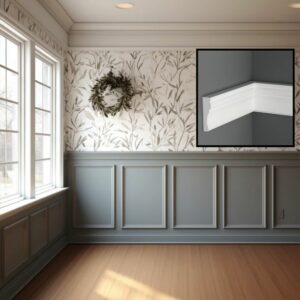 12 Edge Moulding Trim Recommendations: The Designer’s Choice
12 Edge Moulding Trim Recommendations: The Designer’s Choice
